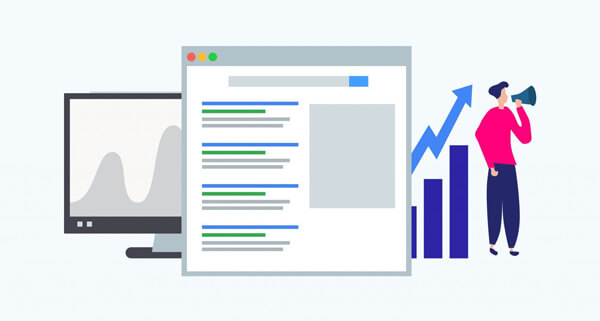Algorithmic vs Manual Google Penalties: What’s the Difference?
If your website’s search rankings on Google have suddenly plummeted, you might be wondering whether a penalty is to blame. A penalty, of course, is a negative action against a website that lowers its rankings. Google uses them to preserve the quality of its search results. By imposing penalties, Google can demote low-quality websites so that they don’t artificially rank above higher-quality websites.
While they all cause a loss of search rankings, there are different types of Google penalties. Some penalties imposed by Google are algorithmic, whereas others are manual. To regain your website’s search rankings, you must determine which type of penalty it has received. Only then can you take the corrective action needed to remove it.

What Is an Algorithmic Penalty?
An algorithmic penalty is an automated negative action that Google’s algorithm takes against a website to lower its search rankings. Google’s search results are compiled by a highly complex algorithm that works in conjunction with crawlers. As Google’s crawlers move around the internet, they’ll collect data on websites. This data is fed into Google’s algorithm where it’s used to calculate the search rankings for websites.
There are many signals Google’s algorithm uses to calculate search rankings. Some of these signals can increase a website’s rankings. Other signals can decrease a website’s rankings. An algorithmic penalty involves the latter type. During an algorithm penalty, Google’s crawlers will identify one or more signals with a website that merits lower rankings.
Google’s algorithm constantly changes. In 2018, the Silicon Valley internet company revealed that its algorithm is updated more than 3,000 times per year. Most of these updates are minor and affect less than 1 percent of all searches. Major updates occur less frequently but have a greater impact. When Google pushes a new update, whether minor or major, it may result in some websites receiving an algorithmic penalty even if they previously ranked high.
What Is a Manual Penalty?
A manual penalty, on the other hand, involves a loss of search rankings due to a violation of Google’s Webmaster Guidelines. Available at support.google.com/webmasters/answer/35769?hl=en, Webmaster Guidelines consist of rules to which webmasters must adhere to rank their websites in Google’s search results. If you don’t play by Google’s rules, you may get burned in the form of a manual penalty.
Manual penalties don’t occur automatically. As their name implies, they occur manually. Google has teams of workers who investigate websites for compliance with its Webmaster Guidelines. Google’s algorithm may automatically flag a website for possible noncompliance, but it won’t impose a manual penalty until the site has been manually investigated. If the team determines that a flagged website violated Google’s Webmaster Guidelines, it may impose a manual penalty.
Common types of manual penalties include:
 User-generated spam
User-generated spam- Deceptive or misleadingly structured data
- Unnatural backlinks
- Spammy free web hosting service
- Hacked website
- Malware
- Thin content
- Cloaked web pages
- Keyword stuffing
- Hidden text
- Accelerated Mobile Pages (AMP) mismatch
- Sneaky redirects
Failure to comply with Google’s Webmaster Guidelines can result in an algorithmic penalty as well. Some of the signals Google’s algorithm uses to calculate search rankings are intertwined with the Webmaster Guidelines. Nonetheless, all manual penalties are caused by a Webmaster Guidelines violation, whereas algorithmic penalties may or may not be caused by a Webmaster Guidelines violation.
Which Type of Penalty Is Affecting Your Website?
Since they both cause a loss of search rankings, you can’t always distinguish between an algorithmic and manual penalty simply by tracking your website’s rankings. If it’s a manual penalty, though, Google will create a notification in your Search Console account. You can find these notifications by clicking the “Security & Manual Actions” tab.
If your website has been targeted with a manual penalty, the notification will explain what caused it and whether it affects your entire site or certain pages. If your website has multiple violations, you’ll receive a separate notification for each of them.
Some manual penalties are also more punishing than algorithmic penalties. They can do more than just lower your website’s rankings. In cases of severe violations, a manual penalty can remove all organic instances of your website from Google’s search results. In other words, your website won’t rank anywhere on Google for any keyword.
Recovering From a Penalty: What You Should Do
Recovering from a penalty requires fixing whatever triggered it. You can find out what triggered a manual penalty by referring to the notification created in your Search Console account. The notification may state that your website was penalized for unnatural backlinks, for instance, which you can fix by deleting and disavowing your site’s low-quality backlinks.
Alternatively, the notification may cite the presence of malware on your website as the reason for its manual penalty. Hackers often inject malware into websites that can spread to a site’s visitors. Google doesn’t want its users to become infected with malware, so it imposes manual penalties on infected websites. If malware has been injected into your website, you’ll need to remove it to fix the manual penalty.
After fixing whatever caused the manual penalty, you should let Google know so that it can reevaluate your website. All manual penalties remain in place until Google’s spam team has approved your website. You can ask them to reevaluate your website by clicking the “Request a Review” link in the notification.
Algorithmic penalties are often more difficult to recover from
Google doesn’t issue notifications about algorithmic penalties so these require a bit more work. With that said, going back to the basics of search engine optimization (SEO) can typically pull your website out of an algorithmic penalty. Creating new content and optimizing your website’s existing content may counter the effects of an algorithmic penalty. You can also spend some time building organic and contextual backlinks to pull your website out of an algorithmic penalty. Just remember to wear a white hat when performing these SEO processes.
Penalties allow Google to maintain high-quality and relevant search results by devaluing low-quality websites. Without them, low-quality websites would be able to manipulate their way to the top of Google’s search results. Algorithmic penalties include disciplinary actions embedded within Google’s algorithm. Manual penalties are those given by Google’s spam teams for Webmaster Guidelines violations.










